[Flower Knowledge] Cultivation methods and precautions of firecracker flower
The firecracker flower is named after its flower that resembles a firecracker. When it blooms in spring, the golden flowers dot the green wall like a string of firecrackers or a spark that explodes into a piece, adding a lot of festive colors to the garden and environment. Let's learn about the cultivation methods and precautions of the firecracker flower and enjoy the pictures of the firecracker flower:
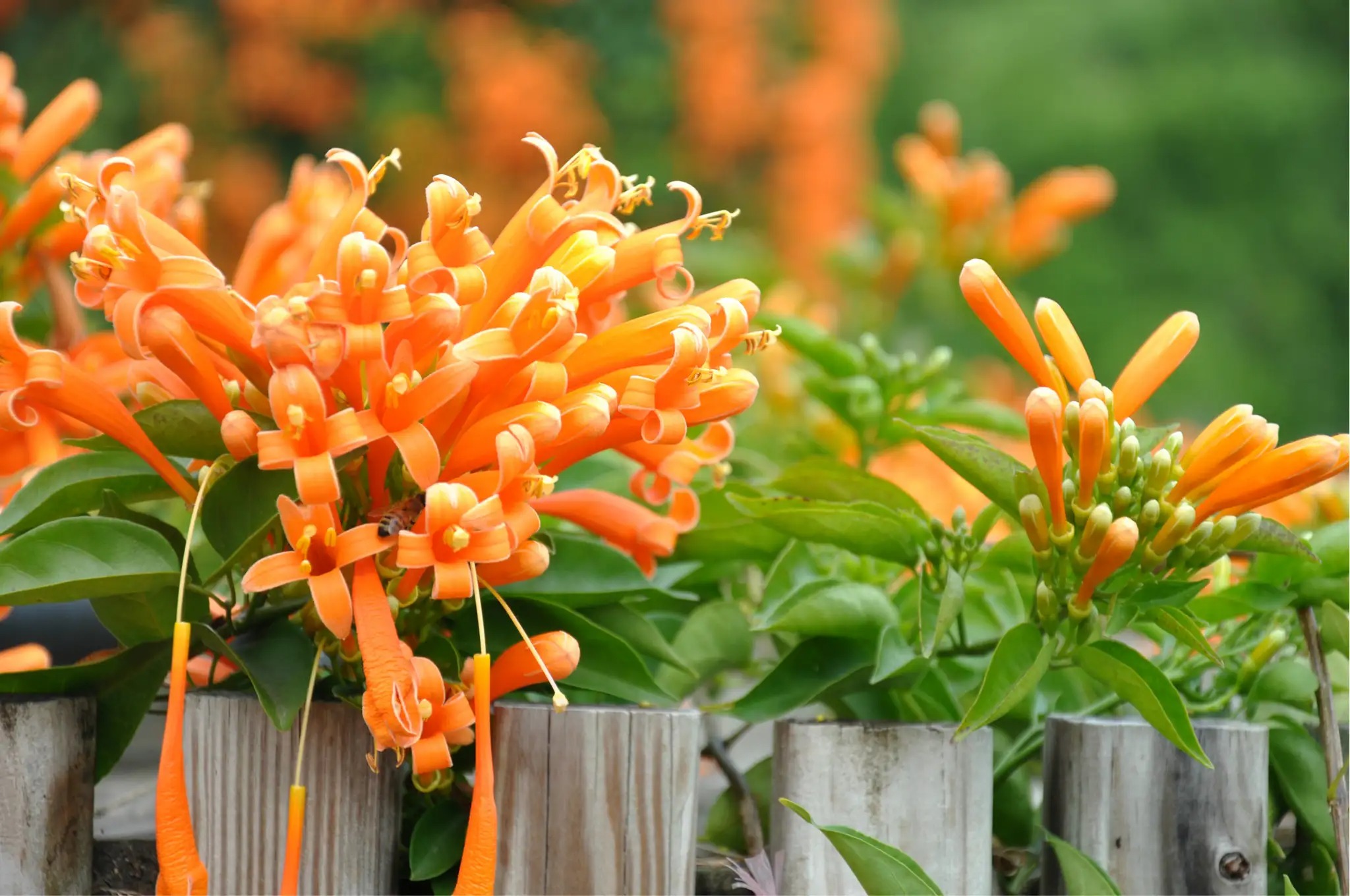
Fireworks flower pictures
About Firecracker Flower:
Pyrostegia venusta (Ker-Gawl.) Miers, also known as firecracker flower and eel vine, is mostly planted around garden buildings and climbs on pergolas. In early summer, the red-orange flowers are clustered in clusters, shaped like firecrackers, so it is called firecracker flower. It likes light, warm and humid climate and acidic soil. It likes sunny environment and fertile, moist and acidic soil. It grows rapidly. In southern China, it can keep its branches and leaves evergreen and can overwinter in the open. It can be used to cover the walls of low-rise buildings or as vertical greening materials for trellises, flower corridors, balconies, etc.
The firecracker flower gets its name because its flowers resemble firecrackers. When it blooms in spring, the golden flowers dotted on the green wall like strings of firecrackers, or like a spark exploding into a piece, adding a lot of festive colors to the garden and the environment.
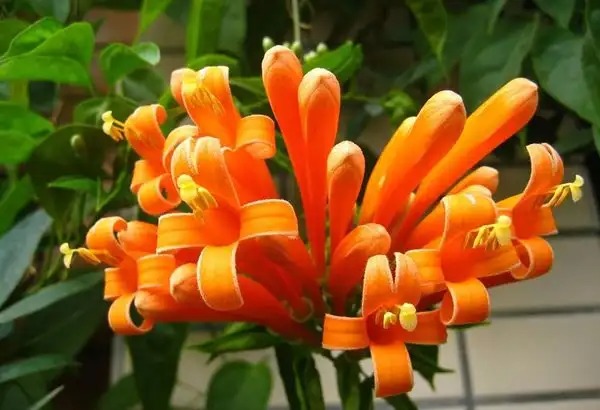
Fireworks flower pictures
How to grow firecracker flowers:
1. Soil: Firecracker Flower is not very demanding on soil, but it will grow stronger if it is cultivated in fertile soil rich in organic matter, with good drainage and deep soil layer. The culture soil should be mainly leaf mold, garden soil, mountain mud, etc., and an appropriate amount of decomposed compost, bean cake, bone meal and other organic fertilizers should be applied as base fertilizer.
2. Watering: Water when the soil is dry and when it is wet. Avoid water accumulation in the pot. In summer, the temperature is high, so watering should be sufficient. At the same time, water should be sprinkled on the ground near the flower pot to increase the air humidity. In autumn, the flower bud differentiation period begins. At this time, watering should be appropriately reduced to control vegetative growth and promote flower bud differentiation.
3. Temperature: Firecracker Flower is not cold-resistant and needs to be moved indoors in the northern regions for winter. During the winter, place it in a sunny place indoors, control watering, stop fertilizing, and keep the room temperature above 10℃.
4. Fertilization: Fertilization should be mainly based on phosphorus fertilizer. Generally, apply a thin liquid fertilizer combining nitrogen and phosphorus about once every two weeks during the growing season. Apply a liquid fertilizer mainly based on nitrogen fertilizer during the bud formation period to facilitate flowering and plant growth.
5. Diseases: Common leaf spot diseases and powdery mildew on firecracker vine can be sprayed with 1500 times diluted 50% carbendazim wettable powder.
6. Pests: The pests of firecracker lily include whiteflies and scale insects, which can be killed by spraying 1200 times diluted 40% oxydemeton-methyl emulsifiable concentrate.
7. Pinching: When the firecracker flower seedlings grow to about 70 cm in height, a trellis should be set up to pull its branches onto the trellis, and the branches need to be pinched to promote the sprouting of side branches, so as to facilitate more flowering.
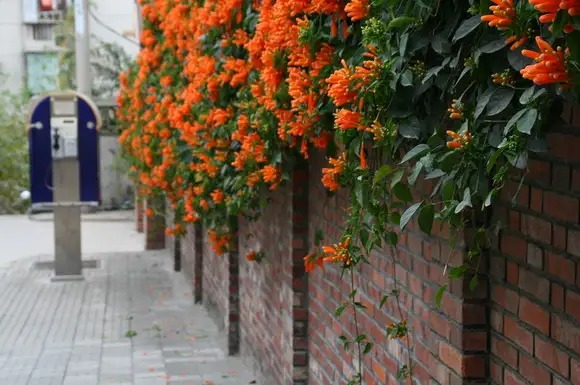
Fireworks flower pictures
Things to note when growing firecracker flowers:
1. Firecracker flower grows quickly, blooms a lot, and has a long flowering period, so fertilizer and water are required. Topdressing should be applied once a month during the growth period. Topdressing should be done with decomposed and thin bean cake water or compound fertilizer to promote its luxuriant branches and leaves and full of flowers.
2. Keep the soil moist. The number of watering should depend on the soil moisture conditions. In the hot summer, in addition to watering, you should also spray water on the branches and leaves 2 to 3 times a day and sprinkle water on the surrounding ground to increase the air humidity.
3. The firecracker flower is a perennial evergreen climbing vine with tendrils that can climb upward with the help of other objects. When cultivating at home, in order to improve the ornamental effect, you can choose a large and deep flower pot when planting. When the seedlings grow to a certain height, build a flower rack in the pot, tie its stems and vines to the flower rack, and pay attention to even distribution, and place it on a sunny balcony for maintenance. It can also be planted in a large pot, set up a flower rack on the balcony, let it climb upward, and when the branches grow to a certain height on the attached objects, they need to be topped to promote the germination of new branches, so as to facilitate more flowering. The branches that have already bloomed will not bloom next year, and the newly grown branches will bud, so some old branches and weak branches should be cut off in time to avoid consuming nutrients and affecting flowering in the second year.
4. Transplant with soil in the middle of the grass or in front of the door in winter, and support with bamboo to prevent lodging. This species relies on tendrils to grow, so do not turn over the vines or break the tendrils during the growth period, otherwise it will affect its absorption of water and nutrients, resulting in poor flowering or even no flowering.
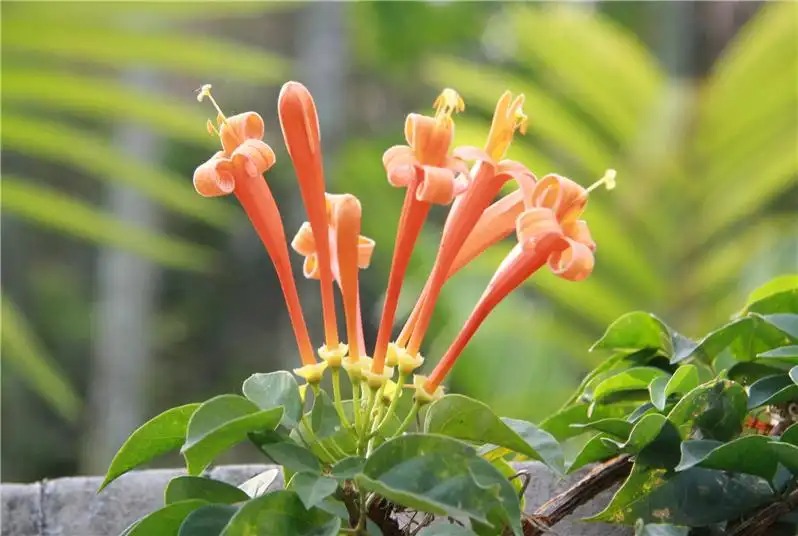
Fireworks flower pictures
How to propagate firecracker flower:
To propagate the firecracker flower, you can use cuttings and layering, but the layering method takes root faster and has a higher survival rate. Generally, after flowering, select strong branches that are one year old or older, cut the part to be buried in the soil, bury it in about 10 cm thick soil, and fix it with bamboo nails to prevent it from popping out. Keep the soil moist at all times. Generally, you can cut it off from the mother plant in autumn and plant it separately.
Cutting propagation: Cuttings are taken in mid-to-late March. One-year-old sturdy branches are selected as cuttings. They are inserted into a wet sand bed and sprayed with moisture. When the air and humidity are stable at around 20°C, roots will grow in about 25 days after cutting, and the survival rate can reach 70%. After about one and a half months, they can be moved into the nursery for cultivation. One-year-old seedlings can be planted out of the nursery, and they can bloom in the next year and become green landscapes in the third year. Old stems can also be used for cuttings, that is, strong old stems grown from the base can be selected, which can be more than 2 meters long, and are cut into fertile sandy loam soil and kept semi-shaded. Roots will begin to grow in about 50 to 60 days, and branches and leaves can be allowed to grow in the same year.
Layering propagation: Layering mainly uses fallen vines, and the skin is wounded and pressed into soil at the axils of leaves. It can be done from spring to autumn, and summer is the best time. It can take 20 to 30 days to take root, and it can be cut into new plants in about one and a half months, and it can bloom in the same year. It is mostly used for potted flower cultivation, or directly layered in containers without moving to nurseries for seedling cultivation.
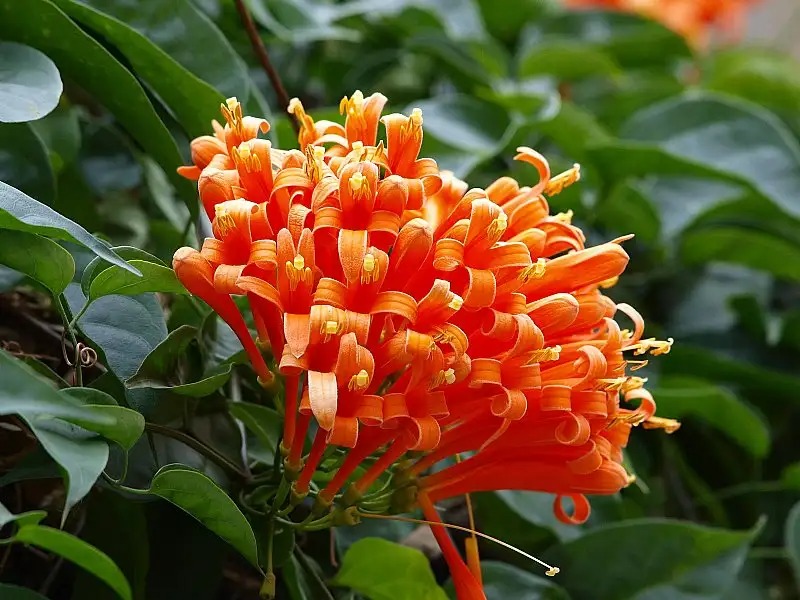
Fireworks flower pictures
The ornamental value of the firecracker flower is high, the effect of embellishing the environment is good, and the cultivation method is simple. If you like it, you may wish to learn more about it. The cultivation method and precautions of the firecracker flower are shared with you here.